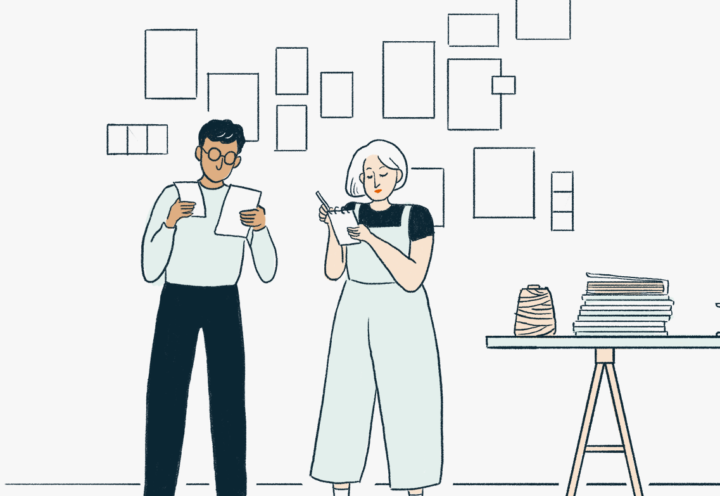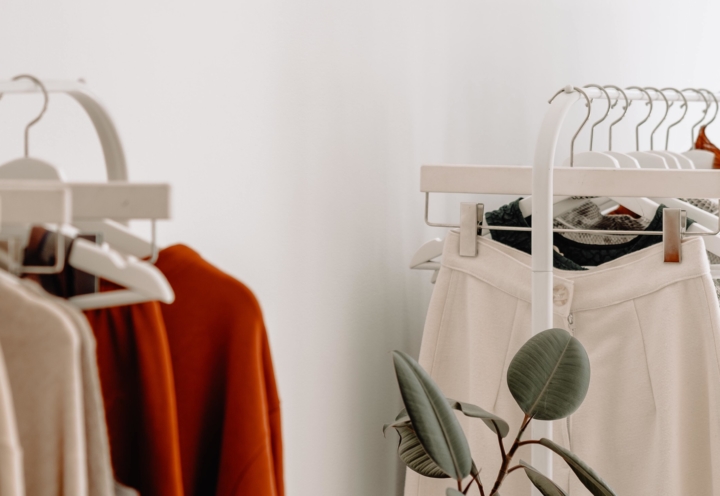In a 2017 survey by Packaging Digest and the Sustainable Packaging Coalition, brands said the questions they were most commonly asked by consumers were:
- Why isn’t their packaging sustainable?
- Why do they use so much packaging?
The packaging components most often questioned yet least understood by consumers are polybags.
What are polybags?
Polybags are the lightweight plastic bags used to individually package products to protect them during freight and distribution. They’re effective and cheap but unfortunately, largely single use plastic. Although they’re a necessity, many customers perceive polybags as waste and harmful to the environment. Across industries brands are coming under fire for their use of polybags. Earlier this year millennial-favourite Glossier, the online beauty brand, came under fire for their excessive use of foil polybags, whilst brand Everlane saw a number of customers respond to their Instagram post (ironically promoting a guide to plastic reduction) dismayed at the amount of plastic packaging included in their orders.
Patagonia, the outdoor clothing brand known for their commitment to the environment, recently delved into their own packaging. Their study showed a 14% increase in customer satisfaction when they used paper mailers and removed polybags. Yet in fact, only 22% of their customers viewed Patagonia’s packaging as environmentally friendly – showing that even for the most eco-conscious of organisations packaging can be a catch-22.
There are, however, a growing number of alternatives to the 100% plastic polybags we are used to that don’t involve paper.

Compostable Polybags
Compostable polybags are a worthwhile, though currently more expensive alternative to conventional plastic polybags. They are not as widely available and their minimum order quantities remain to high, which currently prevents many small and medium side business from using them. Even the likes of Patagonia’s recently told VOX that they had to pool together with other environmental brands to be able to use these bags.
Israel’s TIPA Corp are one of the industry leaders for compostable polybags, their bags are proven to be compostable in consumers’ own backyards (they disappear in less than 180 days if you put them in your compost pile). Being compostable, however, doesn’t come without other challenges to consider. Beyond a need for re-education around disposal, their shelf life of just one year can be an issue.
You might also wonder how the use of sticky labels can figure into a compostable system. Ultimately, they can’t. So most compostable polybags have a zip-closure to lessen the need for stickers which, if used with a compostable bag, will pollute the compost once disintegrated.
Biodegradable Polybags
Designed to break down in landfill, rather than specific compostable conditions, biodegradable polybags are considered to be a more environmentally-friendly option for brands than their conventional versions. Most are starch-based, which means they incorporate corn-starch into the plastic so that it will begin to decay when exposed to a microbe rich environment like a landfill.
Caution should, however, be exercised as some varieties merely break down into smaller microplastics – which pose a different, though just as harmful threat to the environment. This is a particular problem for plastics that claim to be oxo-biodegradable (meaning they break down after oxidization). Some biodegradable bags also achieve their disintegration via photosensitivity – which causes an issue as often these bags will be buried in a landfill, with little sunlight.
Biodegradable components of packaging are most easily achieved via soy-based inks – traditional inks make composting or biodegradation difficult, but soy-based inks make the process achievable.
Recycled Polybags
Opting for polybags made from recycled content is a good way to reduce the amount of virgin petroleum introduced into the economy. However, recycled bags are sometimes made into lower-value products that are then not themselves recyclable. Thus far some suppliers have faced difficulty using recycled materials for polybags, as they can make the bag opaque, which often obstructs the scanning of codes necessary to the product pre-delivery. Patagonia have encouragingly sourced and used polybags made of 20-50% post-consumer recycled content. In 2020 they plan to increase this to 100%.
Recycling Polybags
The polybag, if used correctly, has vast potential for a more resource-efficient, more circular economy. One recent study by Austrian advisory Denkstatt found that in Europe today, 53% of plastic packaging could be recycled economically and environmentally effectively. Though anything beyond this was deemed too expensive, and no longer eco-conscious due to low quality recycling. Nonetheless – the opportunity is there.
Companies that recycle packaging are growing year by year. RePack, who make reusable, easily returnable packaging that lasts up to 20 cycles, encourages customers to post back their packaging back from anywhere in the world for free and receive rewards in return. Trex is the leading manufacturer of garden furniture made from recycled materials such as polybags and Loopstore is a soon-to-launch circular shopping platform that has partnered with leading FMCG brands to sell their goods in reusable containers.
Nonetheless, the recycling system is highly fractured and needs to be consolidated. Only 14% of plastic packaging is collected for recycling. New companies such as TerraCycle offer comprehensive solutions for hard-to-recycle waste, and partner with corporations big and small to offer a free recycling service for consumers, which goes some way to alleviate our waste problem internationally. It will take the involvement of governments, NGOs and business to create a collaborative, efficient system that can consolidate the opportunity left by unrecycled polybags.
Where to now?
Polybags look like they are here to stay – though whether that is in a capacity beneficial to our future or not is down to the packaging decisions we make.
In 2014 alone we produced 311 millions tones of plastic. According to The Ellen MacArthur Foundation, the volume of plastic industries expect to produce is set to rise 5-8% annually – meaning by 2050 we’re set to produce more plastic in one year than the entire plastic industry does yearly today.
These are frightening figures, but ones that we have every power to change. With greater collaboration across industries, departments and governments – as well as wiser choices about the way we handle our business, there’s no doubt polybags can be a form of packaging that fits in with, not takes away from, our future.



